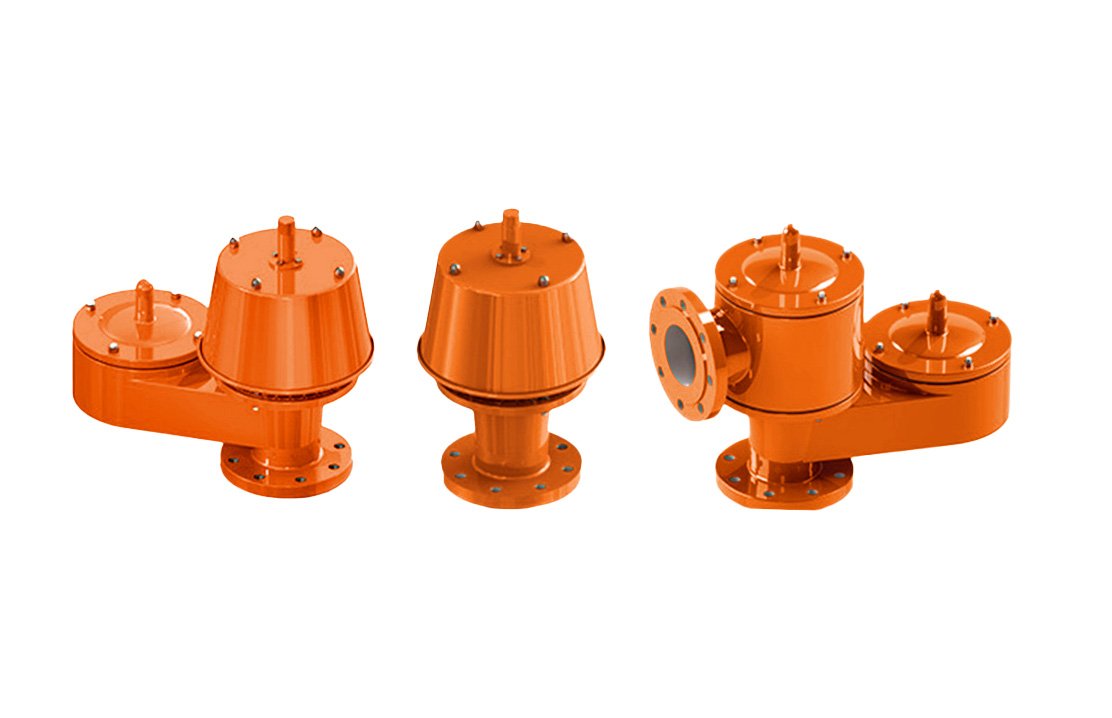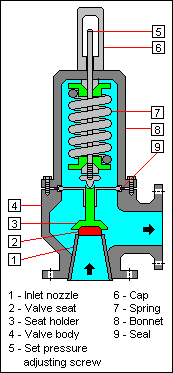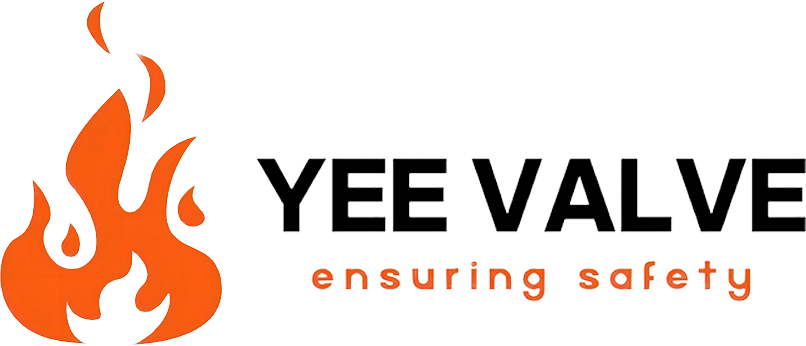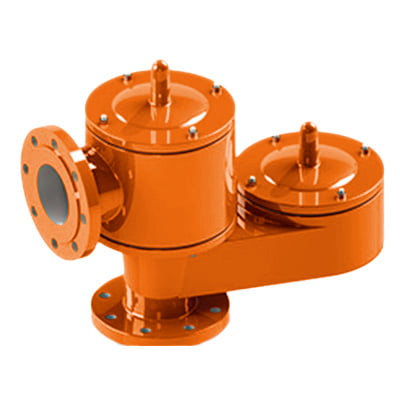Chúng ta đều biết việc chọn van phù hợp là rất quan trọng để đảm bảo an toàn và hiệu quả cho quá trình sản xuất công nghiệp. Van thở và van giảm áp (PRV) là hai van thường được sử dụng thường bị nhầm lẫn do các chức năng tương tự của chúng. Bài viết này sẽ cung cấp cho bạn sự hiểu biết nhanh về sự khác biệt giữa van thở và van giảm áp.
Van thở và van giảm áp (PRV) rất quan trọng để duy trì mức áp suất an toàn trong các hệ thống công nghiệp. Trong khi cả hai ngăn chặn sự tích tụ áp lực quá mức, nhưng
Van thở chủ yếu quản lý cả áp suất và chân không trong các thùng chứa kín, sử dụng các pallet có trọng lượng hoặc lò xo.
PRV được thiết kế để giảm áp suất dư thừa trong hệ thống bằng cách mở tại một điểm áp suất xác định trước, bảo vệ thiết bị khỏi những hư hỏng có thể xảy ra.
Sự khác biệt giữa Van thở và Van giảm áp là gì?
Trong nhiều trường hợp, van thở còn được gọi là van giảm áp suất/chân không. Hãy để tôi giải thích rằng có nhiều thuật ngữ khác nhau có cùng tên nhưng loại van và chức năng hoàn toàn khác nhau. Cái gọi là van giảm áp ở đây chủ yếu là van giảm áp đường ống thông thường, điều khiển điểm giảm áp của van thông qua lực đặt trước của lò xo. Tất nhiên, van thở cũng sẽ sử dụng tải lò xo khi áp suất hoặc áp suất âm chân không tương đối cao. Vì vậy ở đây chúng ta so sánh sự khác biệt giữa van thở và van giảm áp chung.
Van xả hơi

Function
Van thở, thuật ngữ còn lại được gọi là Van giảm áp suất/chân không (PVRV), được thiết kế để bảo vệ bể chứa và bình chứa khỏi áp suất quá cao và điều kiện chân không. Nó cho phép kiểm soát luồng khí vào và ra khỏi bể để cân bằng áp suất bên trong và bên ngoài trong các hoạt động bình thường như nạp và xả.
Hoạt động
Van hoạt động bằng cách mở khi áp suất bên trong bể vượt quá một ngưỡng nhất định, giải phóng áp suất dư thừa (thông hơi) hoặc khi phát hiện thấy chân không, cho phép không khí đi vào bể. Điều này ngăn ngừa thiệt hại cho bể do biến động áp suất.
Các ứng dụng
Thường được sử dụng trong các bể chứa chất lỏng dễ bay hơi để giảm thiểu sự thất thoát hơi và ngăn ngừa hư hỏng cấu trúc của bể.
Pressure Relief Valve
Van giảm áp (PRV) là một loại van an toàn được sử dụng để kiểm soát hoặc hạn chế áp suất trong hệ thống. Nếu áp suất trong hệ thống quá cao, nó có thể gây ra sự cố trong quá trình, hỏng dụng cụ hoặc thiết bị, nổ hoặc cháy.
Function
Van giảm áp được thiết kế chủ yếu để ngăn chặn áp suất quá mức trong hệ thống có thể dẫn đến hỏng hóc hoặc nổ nghiêm trọng. Nó là một thiết bị an toàn mở ra ở áp suất đặt trước để cho phép áp suất dư thừa thoát ra ngoài.
Hoạt động
PRVs open fully to discharge excess pressure from the system when the pressure exceeds the valve’s setpoint. Once the pressure is reduced to safe levels, the valve closes to stop the flow.
Các ứng dụng
PRV được sử dụng trong các hệ thống khác nhau như đường ống, lò phản ứng và bình chịu áp lực, nơi điều kiện áp suất quá cao có thể dẫn đến hỏng hóc thiết bị hoặc gây nguy hiểm về an toàn.

Sự khác biệt chính
Functionality
Van thở kiểm soát cả áp suất và chân không trong bể, duy trì điều kiện vận hành an toàn trong quá trình vận hành bể bình thường. Van giảm áp chủ yếu là thiết bị an toàn ngăn ngừa quá áp bằng cách giải phóng áp suất dư thừa trong điều kiện khẩn cấp.
Đặt điểm
Van thở có điểm đặt cho cả áp suất và chân không, thường hoạt động ở mức chênh lệch áp suất thấp hơn nhiều.
PRV thường được đặt ở áp suất cao hơn để ngăn chặn tình trạng quá áp có thể gây ra lỗi hệ thống.
Ứng dụng
Van thở thường được sử dụng trong bể chứa khí quyển, trong khi van giảm áp được sử dụng trong nhiều hệ thống điều áp, nơi áp suất quá mức phải được kiểm soát chặt chẽ.


Van thở và van giảm áp PRV
Chúng ta đều biết việc lựa chọn loại van phù hợp là quan trọng để đảm bảo an toàn và hiệu quả cho [...]
tháng 8
Quy trình kiểm tra van thở
Trong hệ thống bồn chứa công nghiệp, van thở là bộ phận quan trọng đảm bảo cho […]
tháng 8
3 bước đơn giản để nhanh chóng chọn đúng van thở
YeeValve là một bộ phận chuyên biệt của THINKTANK sản xuất van thở. Chúng tôi cung cấp dịch vụ tư vấn miễn phí […]
tháng 8
Dịch vụ & Hỗ trợ Kỹ thuật
1. Hỗ trợ kỹ thuật Yee Valve cung cấp hướng dẫn chuyên môn về việc lựa chọn, lắp đặt và bảo trì van. Khách hàng […]
Có thể
Danh sách kiểm tra đơn hàng
Khi bạn đặt hàng với Yee Valve, đây là các bước bạn nên làm theo [...]
Có thể
Làm thế nào để định cỡ van thở?
Để xác định kích thước chính xác của van thở, hãy làm theo các bước sau: Bước 1. Xác định thông số kỹ thuật của bể Đo [...]
Có thể